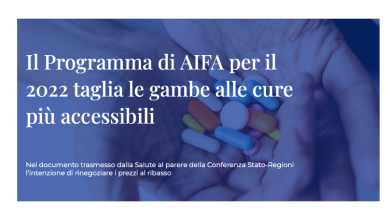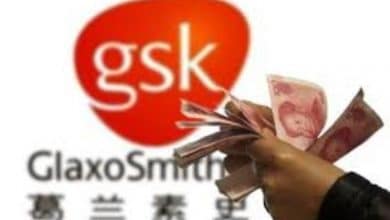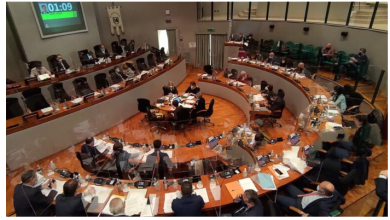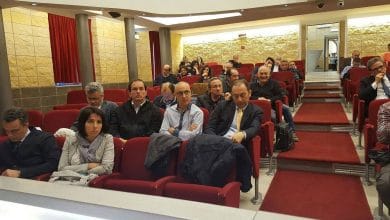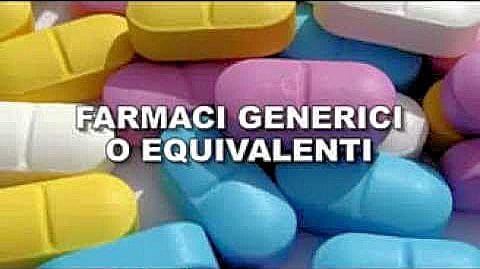
Some critical elements, explains Simi, must always be taken into consideration when prescribing a generic.
Article published on: 10/30/2014
 (Adnkronos Salute) - From 2000 to today, generics have allowed savings of 4 billion euros and today represent 22% of pharmaceutical expenditure reimbursed by the NHS and 31% of packs sold in pharmacies, with the trend towards a continuous increase of 10% l 'year. In short, one drug out of three purchased is generic, but these drugs must be used correctly, effectively and safely in order to be truly 'equivalent' to the drugs they should be copies of: this was underlined by the doctors meeting for the 115th National Congress of the Italian Society of Internal Medicine (Simi), chaired by Gino Roberto Corazza, just concluded in Rome.
(Adnkronos Salute) - From 2000 to today, generics have allowed savings of 4 billion euros and today represent 22% of pharmaceutical expenditure reimbursed by the NHS and 31% of packs sold in pharmacies, with the trend towards a continuous increase of 10% l 'year. In short, one drug out of three purchased is generic, but these drugs must be used correctly, effectively and safely in order to be truly 'equivalent' to the drugs they should be copies of: this was underlined by the doctors meeting for the 115th National Congress of the Italian Society of Internal Medicine (Simi), chaired by Gino Roberto Corazza, just concluded in Rome.
Some critical elements, explains Simi, must always be taken into consideration when prescribing a generic. The bioequivalence, which can be higher or lower than the 20% compared to the 'model', and the presence of different excipients even among generics of the same active ingredient, which can modify its absorption with possible repercussions on the effects of the product, are two elements to evaluate at the time of prescription, especially in the case of patients with a different metabolism such as the elderly or children. The registration and pharmacovigilance procedures also need to be optimised, for products with increasingly guaranteed quality.
Experts propose to request more appropriate bioequivalence studies before placing new generics on the market and careful pharmacovigilance, for closer collaboration between health authorities, health professionals and citizens in identifying and reporting any side effects due to the use of equivalent. “Generics are an irreplaceable resource: there is no doubt that they have helped to control prices and reduce the cost of medicines for both families and the state. However, it is necessary to pay attention to some 'critical elements' to ensure that their use is correct, effective and safe”, observes Franco Perticone, president-elect Simi.
 First of all, "the bioavailability of a generic can also vary by 20% more or less than the starting drug: a 'spread' even of 40% which for some pathologies may not be tolerable, such as for example in patients with cardiac arrhythmia, for where the therapy must be dosed and modulated with great precision in order to have maximum efficacy with the least side effects. With the further consequence that the 'equivalents' are not necessarily equivalent to each other and the possible transition from one to the other can represent a 'leap in the dark' in terms of efficacy and safety”, he adds.
First of all, "the bioavailability of a generic can also vary by 20% more or less than the starting drug: a 'spread' even of 40% which for some pathologies may not be tolerable, such as for example in patients with cardiac arrhythmia, for where the therapy must be dosed and modulated with great precision in order to have maximum efficacy with the least side effects. With the further consequence that the 'equivalents' are not necessarily equivalent to each other and the possible transition from one to the other can represent a 'leap in the dark' in terms of efficacy and safety”, he adds.
For generic drugs that are positioned at the extremes of the 'scissor' "it may happen that, although they are equivalent to the originator drug of  reference, are not among themselves: this danger - he explains - is greater for drugs with a reduced therapeutic index. Even the presence of excipients other than the original, which are also different among the various types of the same generic active ingredient available on the market, can modify the absorption, bioavailability and, ultimately, the action of the product. Furthermore, the excipients can even reserve nasty surprises: some, such as wheat starch, can create problems for coeliacs and still others can cause allergies”. Problems that mainly concern children and the elderly, subjects with a metabolism different from that of adults, i.e. the reference on which bioequivalence studies are conducted in order to obtain authorization for the market.
reference, are not among themselves: this danger - he explains - is greater for drugs with a reduced therapeutic index. Even the presence of excipients other than the original, which are also different among the various types of the same generic active ingredient available on the market, can modify the absorption, bioavailability and, ultimately, the action of the product. Furthermore, the excipients can even reserve nasty surprises: some, such as wheat starch, can create problems for coeliacs and still others can cause allergies”. Problems that mainly concern children and the elderly, subjects with a metabolism different from that of adults, i.e. the reference on which bioequivalence studies are conducted in order to obtain authorization for the market.
Same bioequivalence studies, carried out on average on 24-36 healthy adults, according to the experts they should be improved and explored, for example by extending them to other types of subjects with chronic pathologies and representative of the clinical context of use, to understand the effective efficacy of generics in the conditions real usage. "The qualitative and quantitative requests for placing these drugs on the market, although substantial, are not the same as those for the originator drug - explains Perticone - Today we only know of a generic that there may be differences in the blood concentrations of the drug without knowing how they translate into any differences in effectiveness”.


Editor's note: source of graphs: Absogeneric
Equivalent, pockets of "coldness" remain among doctors
Friday, October 31, 2014 – Doctor33
The number of Italians convinced that equivalent medicines are no less tolerable than the originators is increasing (from 36 to 44%), and the part of the public who have had a positive experience with these products is growing from 77 to 79%, which in six years have saved one and a half billion euros to the health service.
On the other hand, the perceived diffusion of unbranded products is much lower and there remains a 47% of compatriots convinced that they are taking rarely used medicines. The data emerges from the Doxa survey "the sustainability of care" conducted for the second year on a sample of 600 Italians interviewed online and another of family doctors and pharmacists.
Then there remains a 36% (slight decrease for a total of one tenth of the reports) of family doctors who appear neither in favor nor against the non-branded drug. Alongside a 26% of citizens whose doctors do not talk about the topic of generic drugs, it emerges that only the 46% of GPs is truly in favor while a 21% does not take a position and a 7% is decidedly against.
There are three reasons for the opposition: first, the fact that a too wide range of "biological equivalence" is tolerated, equal to 20%, compared to the branded drug; second, for the same or nearly equal price, the originator is recommended because you know him better; thirdly, in some delicate areas (neurology, psychiatry, cardiovascular) the low or high oscillation of the 20% of the availability of the active principle can create problems.
Present at the meeting, the pharmacologist Silvio Garattini he denounces that many doctors are still affected by the stimulus of drug industry advertising, "not effectively countered by the drug agency and the government or by a national information campaign on radio and television".
Joseph Nielfi president of the union of specialists ASL Sumai, underlines the lack of training in the medical world. «An initiative should come from the state for a common FAD of local doctors on these issues; we know how much giving conflicting information between doctors does not help the relationship of trust and the Health Service".
Not entirely satisfied with the survey Enrique Hausermann president of Assogenerici: «For 15 years the discussions on the subject of equivalents have not changed, still in 2013 - as noted by the Osmed report – the Italians have spent a billion euros to get the branded drug. The first regulations of 1996 on the marketing of equivalents imposed bioequivalence studies but with the first real revolution of 2001 it was possible to make drugs registered as copies equivalent, ie on the basis of their own clinical studies. Those drugs were less than five, but there was nimesulide ».
It was there that marked differences were observed with respect to the originator, whose memory still weighs heavily.
Mauro Miserendino
Equivalents, for citizens the pharmacist slows down the substitution
Friday, October 31, 2014 – Pharmacist33
The frequency with which the pharmacist offers citizens the purchase of an equivalent drug instead of a branded one has decreased, albeit slightly: an obligation established by law since 2012 but fulfilled in 2013 in 53% of the cases against 58% of a year before. The data emerges from the Doxa survey "the sustainability of care" conducted on a sample of 600 Italians interviewed online and a second of family doctors and pharmacists. The survey - in its second year - also touches on the sustainability of the NHS, identifying four attitudes of Italians (participatory, angry, self-acquittal, fatalistic); among the behaviors to be activated in order not to waste public health money, the use of equivalents together with prevention stands out. The Italians treated with these drugs are now the 92% and the percentage of those with a favorable use experience is growing by a few points, now touching the 80%; there is also an increase in the number of Italians convinced that generics are just as tolerable as the originators (from 36 to 44%) and just as safe (from 67 to 70%). Among the pharmacists interviewed in a side survey with the GPs, the belief emerges that equivalents allow greater access to treatment and savings to the NHS, but also the awareness that bioavailability compared to branded drugs may be lower. Claudio Distefano past president of Fenagifar replies to the journalist Alessandro Cecchi Paone who points out that in common experience the case of the pharmacist who advises the patient against the use of equivalents is very frequent, directing him to the branded drug. «It can be said that the pharmacist advises against the equivalent and its opposite. In complying with the law, the pharmacist has already been reproached for having convenience in supporting equivalents, but there are no elements to speak of reasons of interest: it is only a cultural fact, in dialogue with the citizen we regain possession of the value of our professional act ». Pia Policicchio, new Fenagifar president, underlines that «there remain pockets of non-collaboration with the mmg» and the original reasons are somewhat the same for which today the term “equivalent” has a better meaning than “generic”: «The second term is links to the 2002 information campaign, when there was talk of generics as an economic alternative without dwelling on the therapeutic response and on the need to give the public certainties on equivalence with respect to the originator». From here perhaps die-hard convictions arose. Moreover, paradoxical and at the same time encouraging data emerge from the survey. An example? While decreasing (from 59 to 54%), the percentage of Italians still convinced that generics are used more abroad than in Italy: and abroad means quality, judging by the judgments of that 32% of the sample who had to do with foreign healthcare and whose answers, surveyed on the basis of experiences in the various countries, see our NHS punctually lower than all, including the healthcare of Spain and Greece.
Mauro Miserendino

